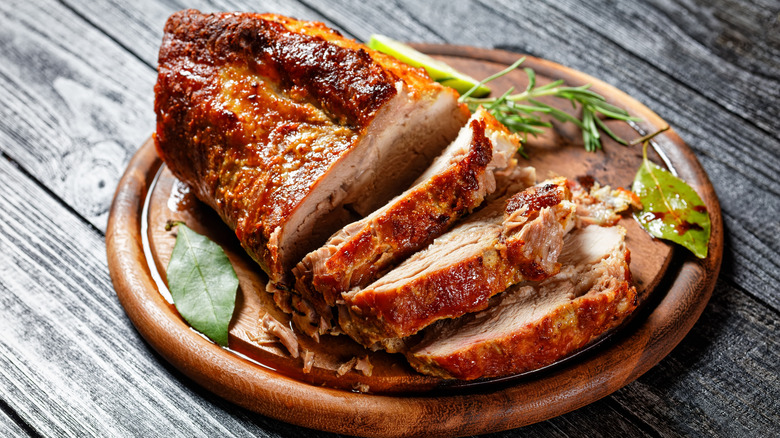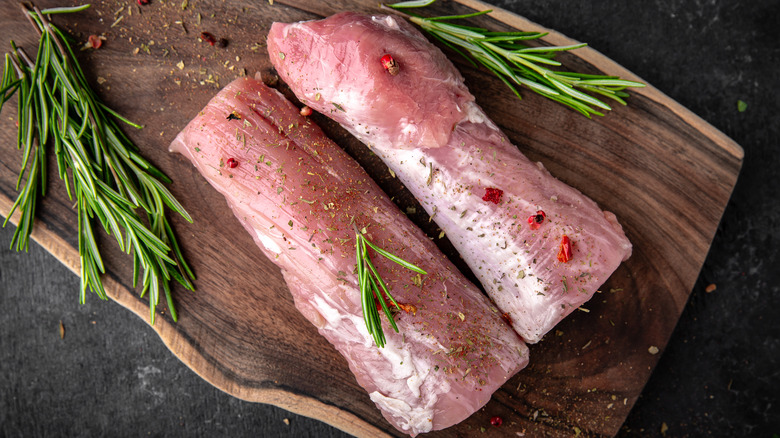The Biggest Mistake You're Making With Pork Tenderloin
Pork tenderloin is one of the most popular cuts of pork at any butcher. According to Kitchn, this tender cut of meat is quick cooking, delicious, and low in fat which makes it a great source of lean proteins. Livestrong says that pork tenderloin contains 22 grams of protein in a three-ounce serving. It's also highly rich in vitamin B, zinc, and selenium which makes it a great resource for all-around health and nutrition.
Because it is a relatively small cut of meat it also cooks quickly. Cook the Story notes that because it is so lean, it is important that pork tenderloin doesn't get the low and slow cooking treatment usually associated with more robust pieces of pork. Instead, it's important that the meat is brought to a safe final temperature of 145 F in a relatively short amount of time. Tenderloin doesn't have enough fat to keep it nice and juicy, and can easily dry out otherwise.
It's no coincidence that tender is a part of this meat's name either. Masterclass says that because this meat comes from a part of the pig that doesn't move much, it can be absurdly tender when prepared correctly (similar to beef tenderloin or filet mignon). There is just one step that most home cooks miss to achieve that perfect tenderloin.
Pork tenderloin needs properly trimmed before cooking
While the tenderloin is highly valued for its gentle texture, there is a part of this cut that can easily get in the way. According to Cook's Country, tenderloins are often sold with a stretch of membrane called the silver skin as well as some extra fat. It can be helpful to leave some of the fat on this extra-lean cut of meat for flavor, but the silver skin is going to be nothing but trouble.
Not only will this membrane remain tough after it's cooked and ruin the tenderloin's texture, but it will also cause it to buckle and cook unevenly. America's Test Kitchen says that buckling occurs when fat, or in this case tissue, cooks and shrinks at a different rate than the meat causing it to become oddly shaped. Cook's Country points out that the best way to deal with this is to simply remove the membrane before cooking. It says to simply slip a thin-bladed knife under the membrane and gently slice it away from the meat. Repeat this until every bit of the silver skin is removed completely from the meat.
For those who are visual learners, or just aren't sure what they're looking for, MBPorkfan also has an easy-to-follow video on its YouTube channel.

